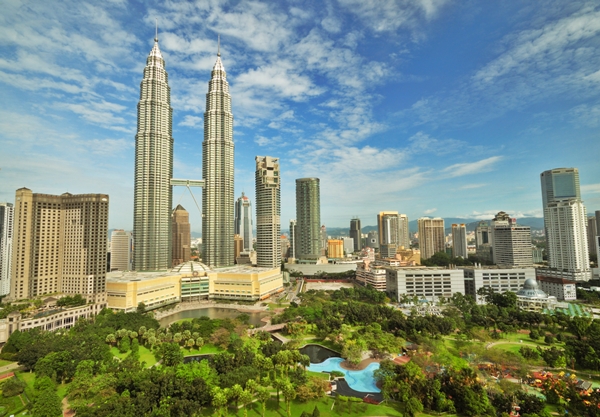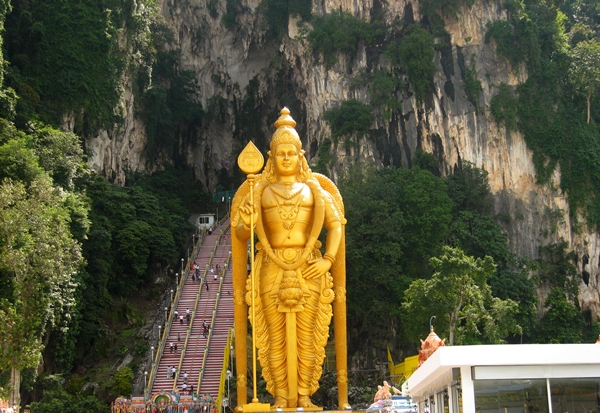Why Go
With a skyline dominated by the Petronas Twin Towers, Kuala Lumpur is a vibrant, modern city with beautiful cultural activities. There is something for everyone in Malaysia’s capital—high-end electronics and fashion shopping, a mix of traditional, colonial and modern architecture and art, family entertainment, and even a rainforest in the center of the city. This is one of the most diverse cities in Asia. Kuala Lumpur is a busy, bustling city, but there are also many great quiet areas to escape from the noise.
While Kuala Lumpur is generally considered a business traveler’s destination, there is more than enough to keep a holiday traveler entertained. For those travelers worried about visiting countries and not understanding the language, there is no problem here if you speak English as a first or foreign language, as most Malaysians speak English. It is also a great travel hub for those looking to move on to other destinations in Malaysia and around Southeast Asia.
Insider Tips
- The train and monorail system in Kuala Lumpur is cheap and convenient, although it doesn’t go everywhere, so plan accordingly. Also, although the station may be near an attraction on the map, the entrances to the station and attraction will not actually be that close.
- Ask the hotel concierge to help you book a taxi if you want to be driven around all day. They should give you a fair price with a driver who speaks English, but you can still bargain a little. If you’re traveling in a group of three or four, this is a great option to see the sights instead of joining a tour.
- If you like the service your taxi driver provides, ask for a business card or phone number. The hotel concierge should be able to help you call him back for future service.
- The Central Market on Jalan Hang Kasturi is a great place to spend a few hours shopping for souvenirs. There’s plenty of variety among the shops and some food to keep you energized. It is very touristy, but you can still find some good deals. And unlike most tourist markets around Asia, the shopkeepers at Central Market won’t harass you to buy everything you see. Don’t forget to bargain.
- For higher-quality Malaysian souvenirs, Compleks Budaya Kraf offers some very nice traditional handicrafts and contemporary art. If you’ve already been to Central Market, just head over to the artist village rather than spending time on souvenirs you’ve already seen. The architecture of the complex and artist village also makes this impressive as a tourist destination. They offer free shuttles to visitors back to hotels; it is acceptable to offer a small tip to the driver, but not necessary.
- lA lot of Malaysian coffee is roasted with butter and salt, and takes a few cups to get used to. Fortunately, restaurants around Kuala Lumpur serve coffee the way most Westerners are used to.
Where to stay
It would be hard to get better value for money in Kuala Lumpur than at the 5-star Royale Chulan Kuala Lumpur, where you can generally get a deal on the hotel’s Web site for about $100 for the cheapest rooms. It’s centrally located, has beautiful and spacious rooms, friendly staff, a lovely pool area, and a world class breakfast buffet. Spa services are superb if you can afford a splurge. If you enjoy shopping (or window shopping) the hotel is near the Pavilion (a massive shopping center with 450 boutiques, restaurants, etc.
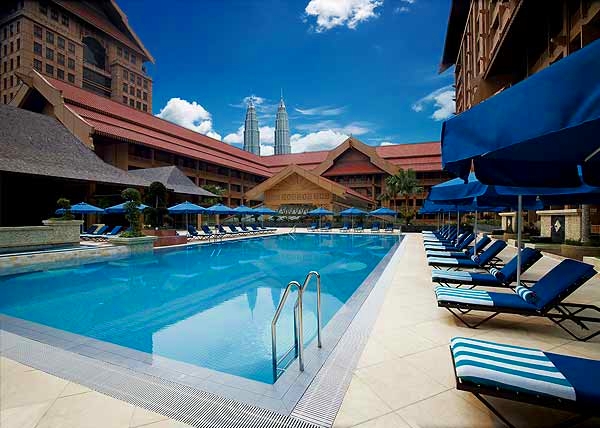
The Meliã Kuala Lumpur is a 3.5 star hotel conveniently located across the street from Times Square Shopping Centre, an enormous mall with an indoor rollercoaster, and right near the Imbi monorail station. The only real downside to this hotel is that it can be very noisy if you stay on the lower floors—the nightclub is open late everyday and is not soundproofed. If at all possible, insist on staying on the upper floors to avoid the repetitive clamor of dance music.
The best service we received during our stay was not from the concierge, but from the doorman. He helped us find taxis for reasonable prices, and even provided us with destination suggestions. He found us one particularly friendly taxi driver who took us to and from Malacca; we liked the driver enough to hire him to take us to the airport as well.
The buffet breakfast makes staying at the Meliã more than worthwhile—they provide a great selection of food that caters to local tastes as well as Western and Middle Eastern. There is plenty to choose from to fuel your energy for a day around the city. And there are numerous restaurants within a short walk from the hotel, including a large selection of local outdoor eateries.
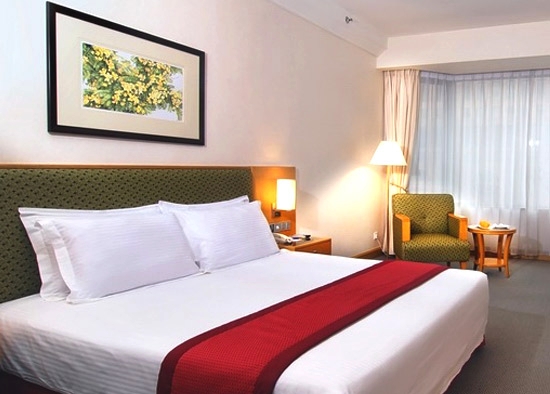
What to eat
The night markets provide a great selection of Malaysian cuisine from hawker stalls, from Char Kway Teow to Murtabak to Asam Laksa. Some of the most popular night markets are in Chinatown at Petaling Jaya SS2 (Mondays in the hawker area, Thursdays in the Cheow Yang area) and Lorong Tuanka Abdul Rahman (Saturdays 5-10pm). Chinatown can be a bit touristy, so you may prefer the more authentically Malaysian Saturday night market at Kampung Bahru (from 6pm Saturday to early Sunday morning), which is one of the oldest residential districts of KL. In all cases, though, be prepared for heavy crowds!
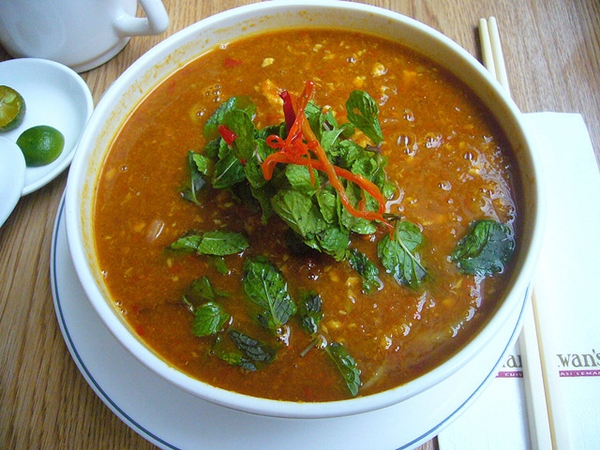
Café Rasa, attached to the Hotel Capitol serves a variety of local and fusion dishes. It is located on a narrow street with very few cars and surrounded by many other small restaurants. This was one of the quietest restaurants in the area.
The food and service is excellent, but pricey—Café Rasa primarily caters to the guests of the hotel. It’s a good choice for travelers after a long day of sightseeing. You can relax with a cold drink and a plate of satay. And for dessert, you can wander the busy street markets and buy some fruit—there are many vendors selling durian (just don’t bring it back to your hotel, since durian, while tasty, is a VERY pungent fruit—think of a stinky French cheese and you get the idea).
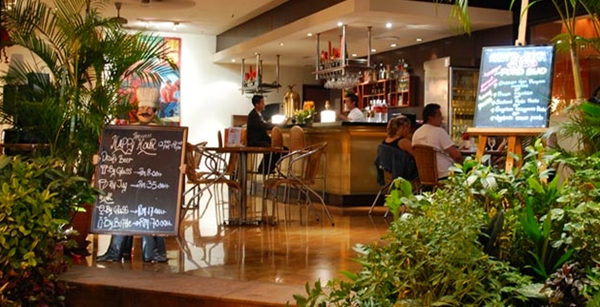
Located at the entrance to the Kuala Lumpur Bird Park, the Hornbill Restaurant & Café offers patrons a wide selection of delicacies w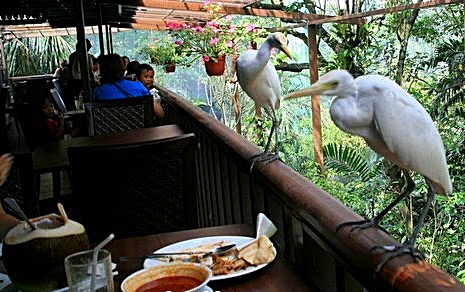
The menu includes a surprising amount of Western dishes. However, the local fare is much better and comes at a more reasonable price. The nasi lemak and mee mamak are highly recommended.
What to see
The Islamic Arts Museum is one of the most impressive museums I have ever visited. The main feature of its interior architecture is its enormous white inverted dome that is inscribed with the opening verse of the Qur’an, which is impossible to fully photograph without lying on the floor. It was on my original itinerary, but I had to convince my parents and wife that it would be enjoyable; they were just as impressed as I was. This is the largest collection of Islamic art in the world.
The museum is organized and labeled amazingly well, allowing visitors to find the exhibits they want easily. The building houses artifacts from around the world—some dating back centuries. There are elaborate tapestries and hand-printed Qur’ans, vast collections of silver work, scale models of mosques, and rooms of calligraphy and paintings. A large portion of the collection comes from Malaysia, Indonesia, India and China.
It’s easy to spend more than two hours wandering through the museum’s two floors of permanent exhibits. The museum also features a Middle Eastern restaurant.
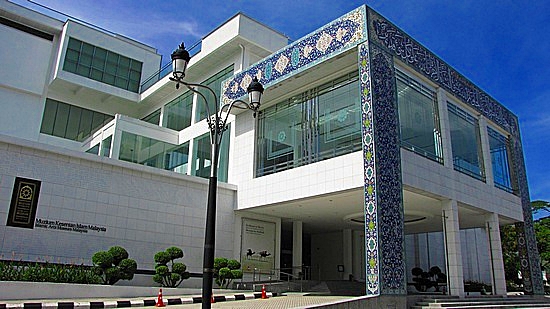
One of the most important cultural sights around Kuala Lumpur is the Batu Caves, which is just a few miles outside the city. It takes anywhere from half an hour to an hour by taxi to get there, depending on where you stay in the city. There are buses from the city to the caves, but they aren’t nearly as convenient as taking a taxi. You don’t have to hire a driver for the whole day as there will be plenty of available taxis to take you back into the city.
At the stairs leading to the entrance is an enormous statue of Lord Murugan–supposedly the largest in the world. From that statue it's only 272 steps (they're numbered) to the cave. If you arrive there early in the morning the heat and humidity isn’t as bad, making the climb up the stairs much easier. The cave is huge–wide with high ceilings and plenty of Hindu worshippers mixed in with the tourists. Inside the cave are shrines and smaller statues depicting Hindu legends. Unlike many underground caverns that tourists frequent, the Batu Caves are not cold, so leave the jackets at home.
Along the steps into Batu Caves, there are quite a few macaque monkeys roaming about. These little creatures can be seen climbing on the statues and jumping in front of tourists. They are not shy and may attempt to steal food and other items from tourists. There are also many people with animals ready to pose for pictures with tourists—most of the animals are large reptiles.
There is also the Dark Cave next to Batu Caves, which tourists must pay to enter.
I expected the Kuala Lumpur Bird Park to be more of a sanctuary, as it is billed as the largest free-flight aviary in the world, but many birds are kept in cages and other enclosures (for the safety of visitors as well as the birds, as the ones in cages are birds of prey). Nevertheless, the variety of bird species that are kept in the park is impressive. And having a bird park of this size in the middle of a major city is amazing. The park itself is very beautiful, and it’s surprisingly quiet considering the number of visitors it gets. Avid bird watchers may not enjoy the experience of visiting the Bird Park, but it is a pleasant stop for families. They offer many family-friendly activities throughout the day.
On a map, it looks like the Bird Park is close to the Islamic Arts Museum. Unfortunately, the entrance to the park is on the opposite side from the museum, thus making it a long walk up hill. It is better planning to start at the Bird Park in the morning, when it’s cooler, and walk downhill to the Islamic Arts Museum, where it’s air conditioned.
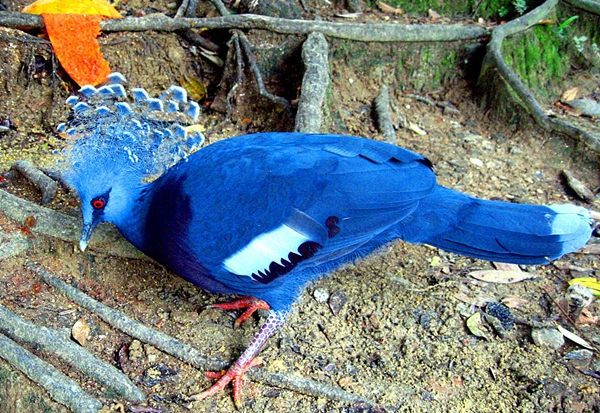
Need Award Booking Help? Our fee is as low as $75 per ticket if you book your hotel through us.
If you enjoyed this, join 100,000+ readers: please follow TravelSort on Twitter or like us on Facebook to be alerted to new posts.
Become a TravelSort Client and Book 5-Star Hotels with Virtuoso or Four Seasons Preferred Partner Amenities!
Photos: Royale Chulan Hotel, Melia Hotel, alicereneztay, Cafe Rasa, Hornbill Restaurant and Cafe, Jean-Marc
